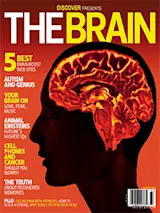Nadia appeared healthy at birth, but by the time she was 2, her parents knew something was amiss. She avoided eye contact and didn’t respond when her mother smiled or cooed. She didn’t even seem to recognize her mother. She was unusually clumsy and spent hours in repetitive play, such as tearing paper into strips. But at 3½ she picked up a pen and began to draw—not scribble, draw. Without any training, she created from memory sketches of galloping horses that looked like the work of an adult. Unlike the way most people might draw a horse, beginning with its outline, Nadia began with random details: first a hoof, then the horse’s mane, then its harness. Only later did she lay down firm lines connecting these floating features. And when she did connect them, they were always in the correct position relative to one another.
Nadia is an autistic savant, ...















